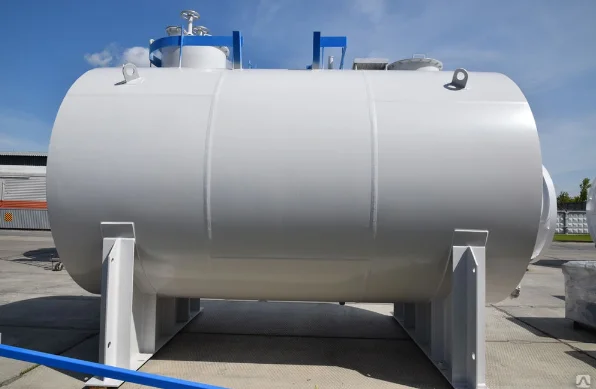Industrial metal tanks play an important role in the storage and transportation of various liquid and gaseous substances. The process of their production is a complex sequence of stages, including the selection of materials, design, preparation, processing, testing, finishing, as well as transportation and installation.
Selection of materials
Selection of materials for the production of metal tanks is a critical step that determines the final quality and reliability of the design. Engineers and specialists from prom-baki.uz conduct a thorough analysis of the requirements for tanks, taking into account the chemical nature of the substances that will be stored, operating conditions, as well as environmental factors.
The materials used include various grades of steels and alloys, each of which has its own unique characteristics. For example, for storing corrosive substances such as acids or alkalis, special corrosion-resistant steels with high chemical resistance can be used.
In addition to chemical resistance, when choosing materials, their mechanical strength and ability to deform under pressure are also taken into account. pressure, as well as thermal stability, especially when storing hot liquids or vapors.
Design and development
The design of metal tanks begins with an analysis of the technical requirements and specifications that determine the main parameters of the future design . Engineers take into account factors such as the volume of the substance stored, pressure, external loads, as well as transportation and installation conditions.
Particular attention is paid to the geometry of the tank, since the correctly selected shape and dimensions can significantly affect its strength and stability to loads. Also during the design process, the necessary structural elements are determined, such as bottoms, walls, covers, hatches and sealing devices.
Using modern computer technologies and software, engineers develop three-dimensional models of the future tank, which allow for virtual testing and optimization of the design before production begins.
In addition, the design phase takes into account not only the functional efficiency of the tank, but also its economic feasibility, striving to achieve an optimal balance between quality and production costs.
Preparation materials
Before starting the metalworking and assembly process, it is necessary to carefully prepare the materials. This stage includes a number of important operations, starting with cutting sheet metal to the required dimensions. This requires precision and care, since the correct sizes and shapes of the sheets will determine the final shape and dimensions of the tank.
After cutting, the materials undergo a cleaning process to remove contaminants. This is important to ensure high-quality welding and production of a defect-free structure. Cleaning may include the removal of fats, oils, oxides and other contaminants that can affect weld quality and durability of the final product.
Next comes the final surface preparation phase of the materials before metalworking. This may include operations such as grinding, polishing or chemical treatment, depending on the requirements for the final surface quality and the characteristics of the materials used.
Metalworking and Assembly
The main stage of production of metal tanks is metal processing and assembly. This process begins with the manufacture of individual structural elements such as bottoms, walls, covers and other parts. Depending on the specific requirements for the tank and the materials used, various processing methods can be used, such as bending, cutting, stamping, drilling, milling, etc.
After the individual elements are manufactured, they are assembled into a single whole . This may involve welding, bolting, riveting, or other fastening methods. Particular attention is paid to the accuracy and quality of assembly, since the strength and reliability of the final structure depends on this.
In parallel with metalworking and assembly, the necessary operations are carried out for the installation of additional elements, such as doors, hatches, sealing devices and other components, which may be required for a particular tank design.
It is important to note that the entire metalworking and assembly process is carried out to strict quality and safety standards to ensure the final product meets all customer requirements and specifications.
Testing and testing
The testing and testing stage is an integral part of the production process of metal tanks, aimed at ensuring their reliability and safety in operation. After assembly is complete, each tank is subjected to





